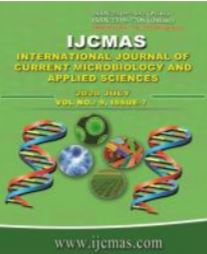


 National Academy of Agricultural Sciences (NAAS)
National Academy of Agricultural Sciences (NAAS)

|
PRINT ISSN : 2319-7692
Online ISSN : 2319-7706 Issues : 12 per year Publisher : Excellent Publishers Email : editorijcmas@gmail.com / submit@ijcmas.com Editor-in-chief: Dr.M.Prakash Index Copernicus ICV 2018: 95.39 NAAS RATING 2020: 5.38 |
The aim of this study is to evaluate the effect of chocolate waste on the fertility of Japanese quails. The study was conducted at Poultry Research Station, Madhavaram, Chennai, Tamil Nadu, India on 500 Japanese quail birds. The chicks were randomly allotted to four treatment groups (T1, T2, T3 and T4) with 125 birds in each treatment. Each treatment had 5 replicates and each replicate had 25 birds. The birds were fed with brooder (0 to 3 weeks), grower (4 to 5 weeks) and layer diets (7 to 16 weeks) containing graded levels of chocolate waste at 0, 5 10 and 15 per cent. The experimental diets were formulated as per the BIS specifications. The diets were iso-nitrogenous and iso-caloric. At the end of the growth trial at the age of 5 weeks, the birds were evaluated for the fertility of Japanese quails. The parameters measured were body weight and age at sexual maturity in Japanese quails. The body weight and age at sexual maturity showed no significant difference (P > 0.05) among the treatment groups. Therefore, it could be concluded that addition of chocolate waste on Japanese diet has not affected the fertility of Japanese quails.
 |
 |
 |
 |
 |